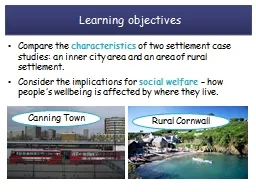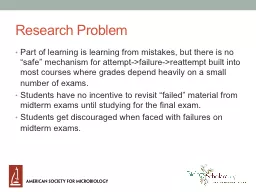PPT-Learning objectives Compare the
Author : pasty-toler | Published Date : 2018-07-12
characteristics of two settlement case studies an inner city area and an area of rural settlement Consider the implications for social welfare how peoples
Presentation Embed Code
Download Presentation
Download Presentation The PPT/PDF document "Learning objectives Compare the" is the property of its rightful owner. Permission is granted to download and print the materials on this website for personal, non-commercial use only, and to display it on your personal computer provided you do not modify the materials and that you retain all copyright notices contained in the materials. By downloading content from our website, you accept the terms of this agreement.
Learning objectives Compare the: Transcript
Download Rules Of Document
"Learning objectives Compare the"The content belongs to its owner. You may download and print it for personal use, without modification, and keep all copyright notices. By downloading, you agree to these terms.
Related Documents














